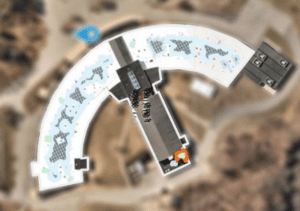Who is a member?
Our members are the local governments of Massachusetts and their elected and appointed leadership.

A Betterview image shows minor areas of rust (orange) and staining (green) on a roof that received a score of 73 out of 100 and is considered healthy.
MIIA was an early adopter of technology tools that help members reduce risk and manage their properties to prevent losses. The avoided losses resulting from investments in these technologies can be in the hundreds to thousands of dollars.
One of MIIA’s more popular technology offerings is the Hartford Sensor Program, which includes a suite of internet-connected devices that send alerts about a range of potential problems, including water leaks, frozen pipes, refrigeration temperature changes, and increases in humidity.
Pipe bursts resulting from freeze-ups can create serious problems, often requiring the replacement of ceilings, walls and floors. They can also lead to costly mold-mitigation measures and the need to replace furniture and expensive computer equipment that have sustained water damage. Monitoring sensors that immediately alert staff to a problem make a lot of sense when buildings are closed on weekends, during school vacations, or during extended forced shutdowns.
Betterview, a software platform that uses satellite and aerial imagery to analyze the status of a roof, is one of the more-recent technologies that MIIA is using in its efforts to manage losses. The tool evaluates a range of roof condition indicators, including ponding, missing or damaged shingles, rust and tree overhang. It also looks at the physical characteristics of the property, the building footprint, and risks that are common to the region, such as weather-related events like hurricanes, tornados, blizzards and bomb cyclones.
After conducting an analysis of the data gathered, Betterview provides a detailed report and a score, like a credit rating, on the predicted probability of loss over time. A roof that scores in the 1-9 range is in “imminent danger of failure”; 10-49 is intermediate, and 50-100 reflects a roof without significant issues.
The reports generated by Betterview are comprehensive and include color-coded images that show where problems are (if any) and the types of issues present.
MIIA’s pilot with Betterview involved analyzing 1,000 roofs, age 20 years or older. The roofs were equally distributed across Massachusetts. The good news is that less than 1% of the roofs analyzed were rated in imminent danger of failure. To confirm the validity of the results, MIIA inspectors are going out to conduct in-person assessments.
MIIA is still in the process of validating the results, but the pilot looks promising. MIIA is now planning to use Betterview to look at another 1,500 properties, which would bring the total analyzed to about 25% of the more than 10,000 properties that MIIA insures.
In addition to helping building owners understand the status of their property’s roof, the data provided can also help with capital campaign planning. It can also help the insurer demonstrate to its reinsurers the true condition of its properties, which can help ensure fair and reasonable rates for members of the group.
Sensors and satellite imagery are just two of the many technical property management options available to all cities and towns.
As communities move toward being Smart Cities – those that use sensors for water and sewer systems, advanced electric grid technologies to monitor power lines and energy consumption, and data management systems for property management – we can expect to see less risk and fewer claims.
Written by Stephen Batchelder, MIIA Vice President of Claims Operations and Risk Management